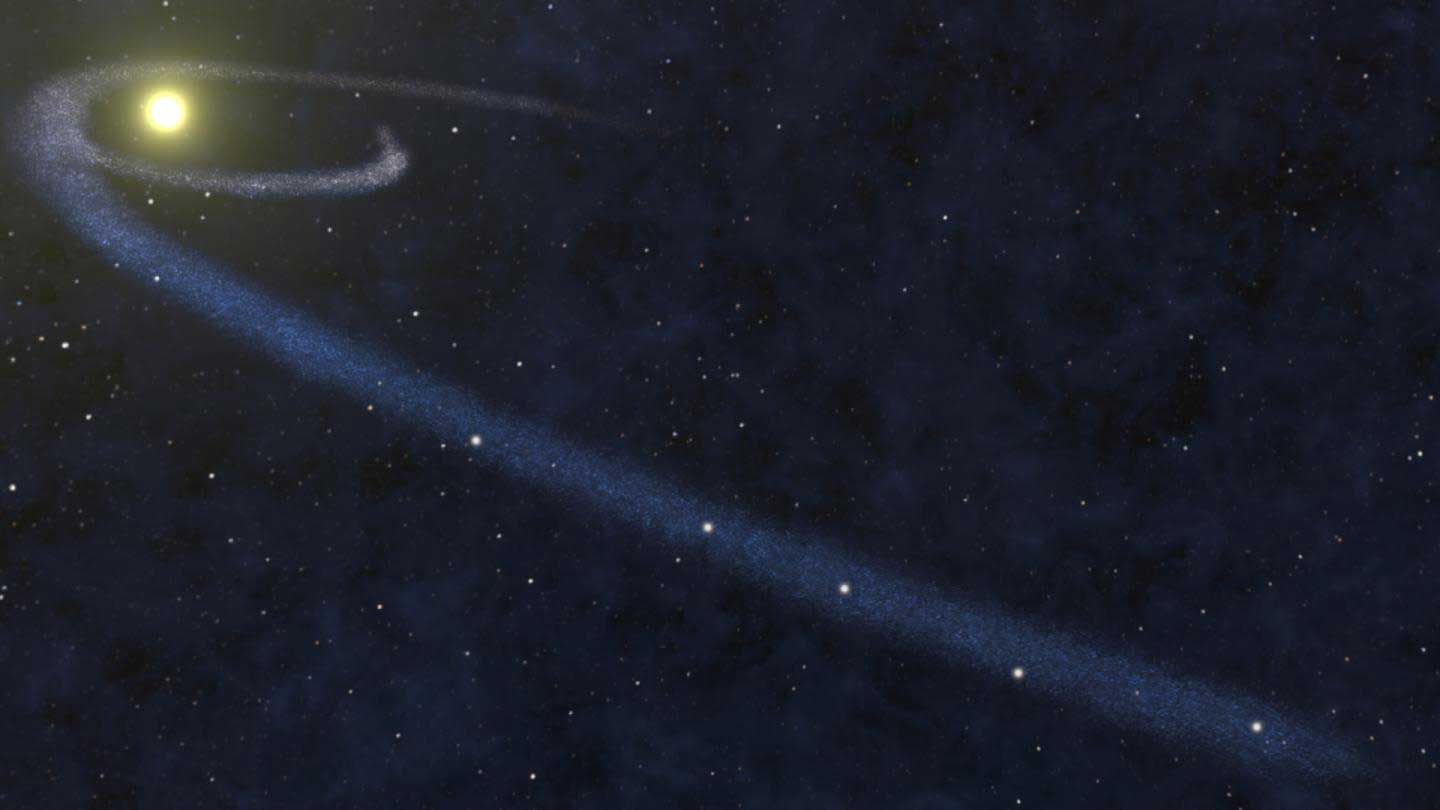
The majority of the universe’s mass is believed to be mysterious dark matter and dark energy. 5 percent is ‘normal matter’ that makes up stars, planets, asteroids, etc. This is known as baryonic matter.
For quite a long time, researchers have been puzzled about why they couldn’t represent all the matter in the universe as anticipated by hypothesis.
For the first time, Astronomers used distant galaxies as ‘scintillating pins’ to locate and identify a piece of the Milky Way’s missing matter.
Yuanming Wang, a doctoral candidate in the School of Physics at the University of Sydney, has developed an ingenious method to track down the missing matter. Using the technique, Wang pinpointed a hitherto undetected stream of cold gas in the Milky Way about ten light-years from Earth.
The cloud is about a trillion kilometers long and 10 billion kilometers wide but only weighing about our Moon’s mass.
Ms. Wang, who is pursuing her Ph.D. at the Sydney Institute for Astronomy, said, “We suspect that much of the ‘missing’ baryonic matter is in the form of cold gas clouds either in galaxies or between galaxies.”
“This gas is undetectable using conventional methods, as it emits no visible light of its own and is just too cold for detection via radio astronomy.”
Astronomers observed radio sources in the distant background to see how they ‘shimmered’. They discovered five twinkling radio sources on a giant line in the sky.
Their analysis also shows that their light must have passed through the same cold clump of gas.
When visible light is distorted while passing through the atmosphere, it gives stars their twinkle. Similarly, when radio waves pass through the matter, it affects their brightness. It was that scintillation’ that Ms. Wang and her colleagues detected.
Dr. Artem Tuntsov, a co-author from Manly Astrophysics, said: “We aren’t quite sure what the strange cloud is, but one possibility is that it could be a hydrogen ‘snow cloud’ disrupted by a nearby star to form a long, thin clump of gas.”
According to theorists, some of the universe’s missing baryonic matter could be locked up in these hydrogen ‘snow clouds’. They are almost impossible to detect directly.
Ms. Wang said, “However, we have now developed a method to identify such clumps of ‘invisible’ cold gas using background galaxies as pins.”
Professor Tara Murphy said: “This is a brilliant result for a young astronomer. We hope the methods trailblazed by Yuanming will allow us to detect more missing matter.”
For the study, scientists gathered the CSIRO’s Australian Square Kilometre Array Pathfinder (ASKAP) radio telescope in Western Australia.
Dr. Keith Bannister, Principal Research Engineer at CSIRO, said: “It is ASKAP’s wide field of view, seeing tens of thousands of galaxies in a single observation that allowed us to measure the shape of the gas cloud.”
Professor Murphy said: “This is the first time that multiple ‘scintillators’ have been detected behind the same cloud of cold gas. In the next few years, we should be able to use similar methods with ASKAP to detect a large number of such gas structures in our galaxy.”
Ms. Wang’s discovery adds to a growing suite of astronomers’ tools in their hunt for the universe’s missing baryonic matter. This includes a method published last year by the late Jean-Pierre Macquart from Curtin University, who used CSIRO’s ASKAP telescope to estimate a portion of matter in the intergalactic medium using fast radio bursts as ‘cosmic weigh stations.’
Journal Reference:
- Yuanming Wang et al. ASKAP observations of multiple rapid scintillators reveal a degrees-long plasma filament, Monthly Notices of the Royal Astronomical Society (2021). DOI: 10.1093/mnras/stab139
Continue reading Astronomers identified a piece of the Milky Way’s missing matter on Tech Explorist.
0 comments:
Post a Comment